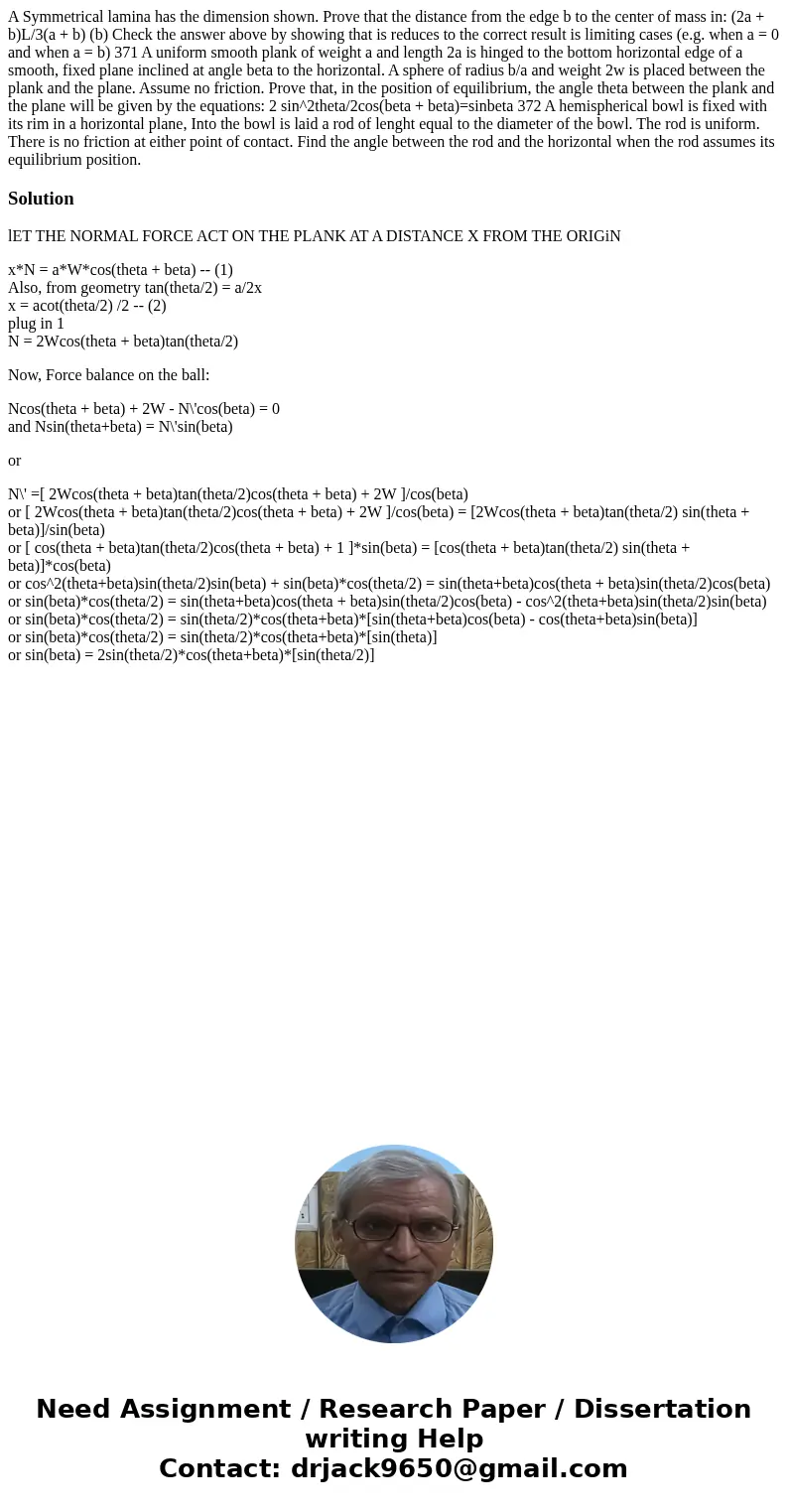A Symmetrical lamina has the dimension shown Prove that the
Solution
lET THE NORMAL FORCE ACT ON THE PLANK AT A DISTANCE X FROM THE ORIGiN
x*N = a*W*cos(theta + beta) -- (1)
Also, from geometry tan(theta/2) = a/2x
x = acot(theta/2) /2 -- (2)
plug in 1
N = 2Wcos(theta + beta)tan(theta/2)
Now, Force balance on the ball:
Ncos(theta + beta) + 2W - N\'cos(beta) = 0
and Nsin(theta+beta) = N\'sin(beta)
or
N\' =[ 2Wcos(theta + beta)tan(theta/2)cos(theta + beta) + 2W ]/cos(beta)
or [ 2Wcos(theta + beta)tan(theta/2)cos(theta + beta) + 2W ]/cos(beta) = [2Wcos(theta + beta)tan(theta/2) sin(theta + beta)]/sin(beta)
or [ cos(theta + beta)tan(theta/2)cos(theta + beta) + 1 ]*sin(beta) = [cos(theta + beta)tan(theta/2) sin(theta + beta)]*cos(beta)
or cos^2(theta+beta)sin(theta/2)sin(beta) + sin(beta)*cos(theta/2) = sin(theta+beta)cos(theta + beta)sin(theta/2)cos(beta)
or sin(beta)*cos(theta/2) = sin(theta+beta)cos(theta + beta)sin(theta/2)cos(beta) - cos^2(theta+beta)sin(theta/2)sin(beta)
or sin(beta)*cos(theta/2) = sin(theta/2)*cos(theta+beta)*[sin(theta+beta)cos(beta) - cos(theta+beta)sin(beta)]
or sin(beta)*cos(theta/2) = sin(theta/2)*cos(theta+beta)*[sin(theta)]
or sin(beta) = 2sin(theta/2)*cos(theta+beta)*[sin(theta/2)]

 Homework Sourse
Homework Sourse